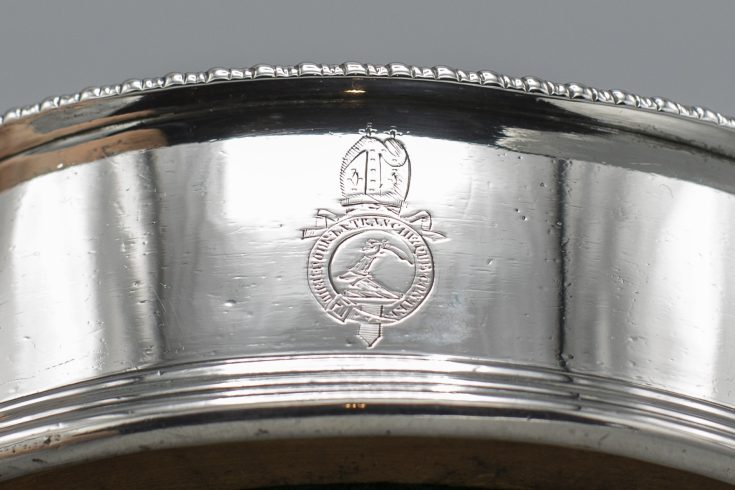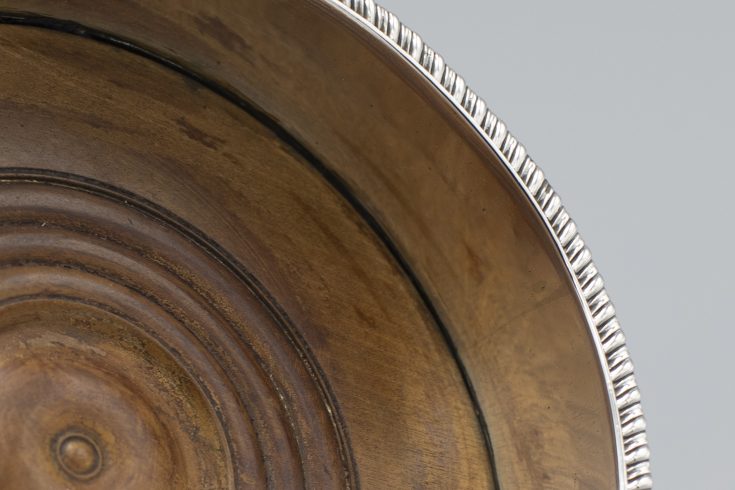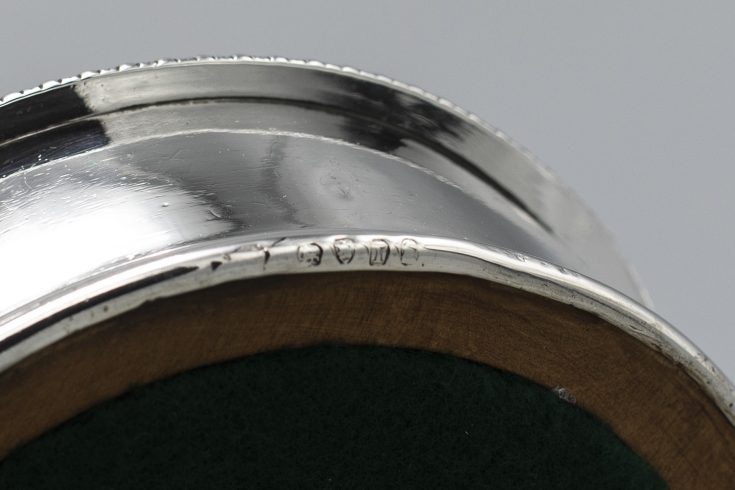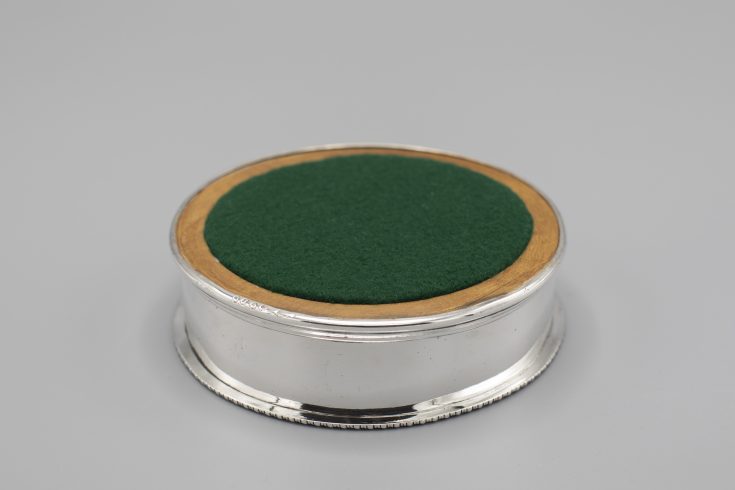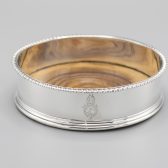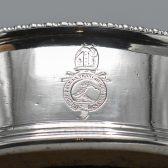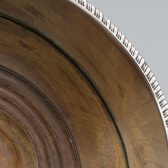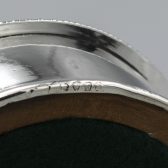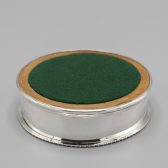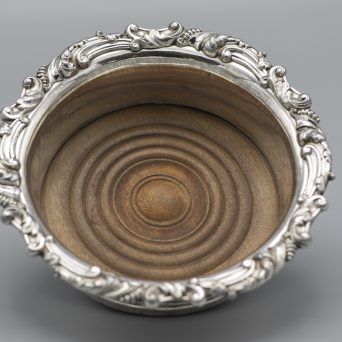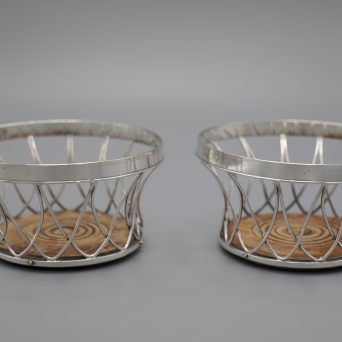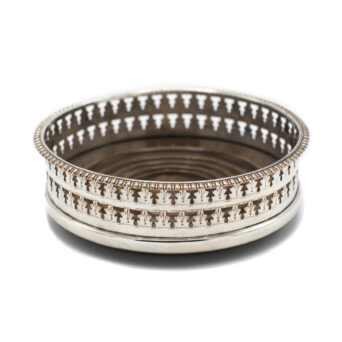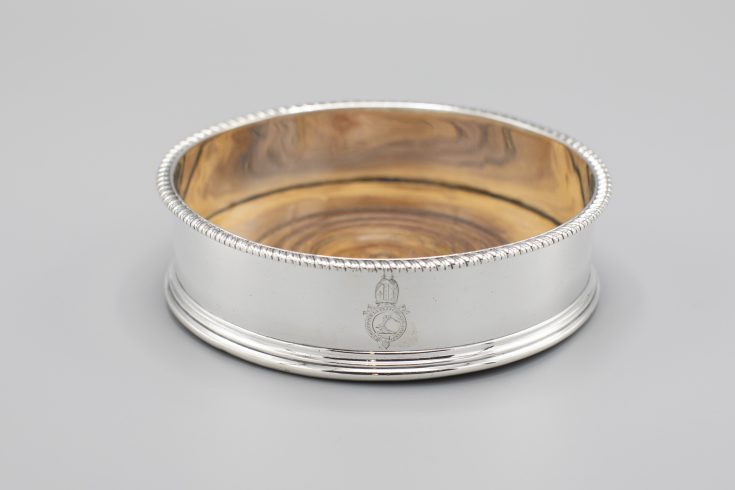
Antique George III English Silver Wine Coaster
With the arrival of the elegant and sophisticated new style of dining in the 18th century, the demand for objects on the dining tables started to emerge. As a result of this, the silver wine coaster started to make its presence felt.
The original purpose was for placing a decanter so as to make it a decorative aspect for the table. Also, as noted before, a wine coaster prevented scratching of the table from the cut glass. The earliest wine coasters generally started to appear around 1760; therefore, very few have survived prior to this time. The oldest wine coasters tend to be hand pierced, approximately 5 inches in diameter, and having mahogany inserts. By the late eighteenth century, the wood inserts began to be made of oak and the wine coasters tended to be a little larger. The styles and designs that were produced at this time were many with various looks and styles to choose from.
A very attractive Antique George III Sterling Silver Wine Coaster. Quite classic in design, it has a thread edge border at the base and a shaped gadroon rim. There is also a lovely crest on this piece.
Our Antique George III Sterling Silver Wine Coaster is marked around the base. Please note that the maker’s mark is completely rubbed but all the other marks are quite legible and readable. It was quite normal at this time for silver wine coasters to be marked in that area. The practice at this time was to fit the wooden base by hammering the silver around the wine coaster. It was required that any wood or non-precious material be left out of a piece for hallmarking. Thus, the hallmarks can be compromised slightly by the fitting of the wooden base.
